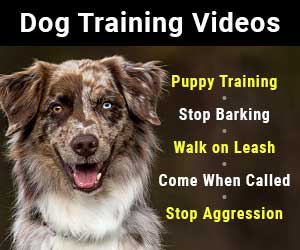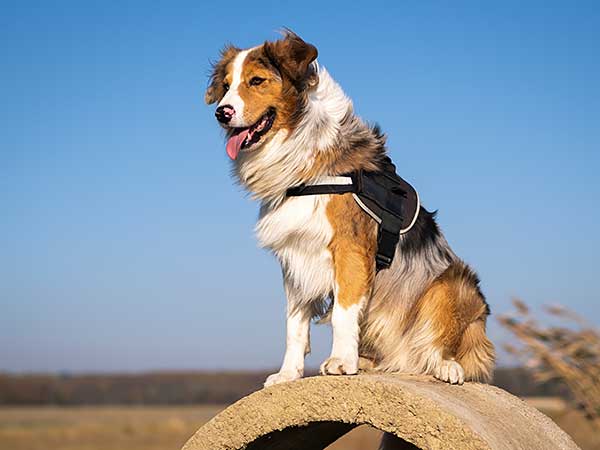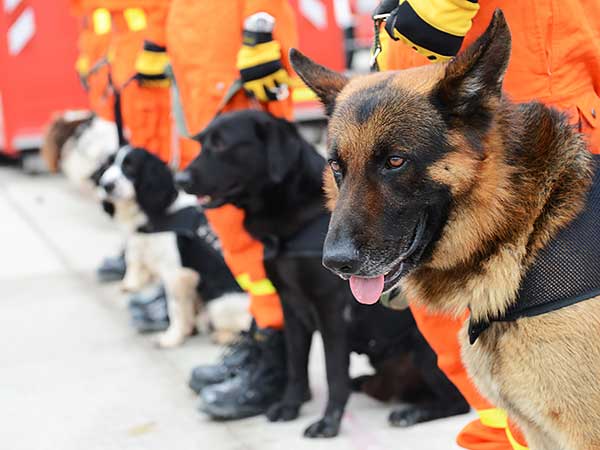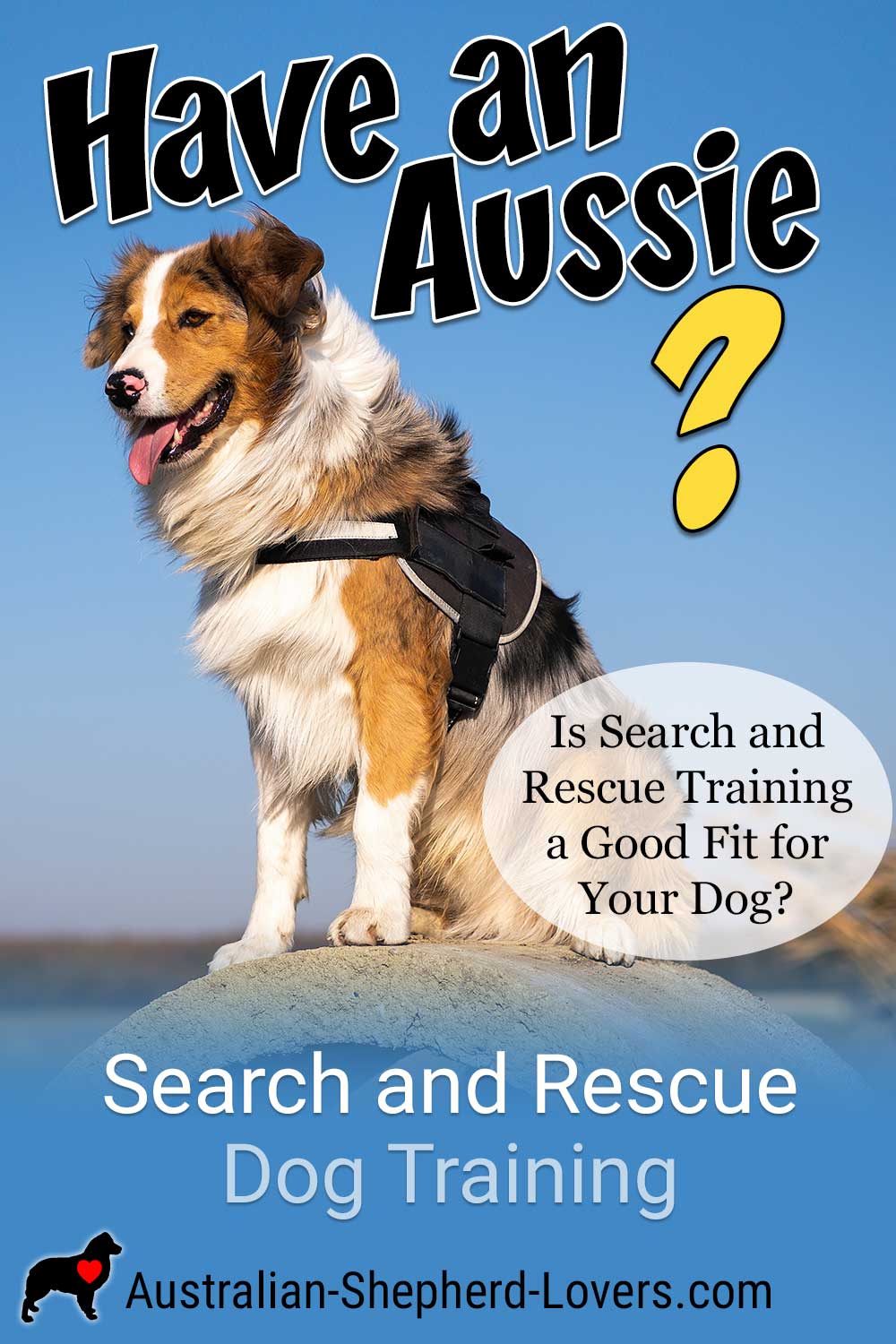
Is Search and Rescue Dog Training a Fit for Your Australian Shepherd?
Search and rescue dog training can be a wonderful way for you and your dog to make a real difference in the community. These dogs are ready at a moment's notice to rush into dangerous situations and help people who have become lost or injured. Nothing is more comforting when you find yourself in trouble than hearing a bark and having a search and rescue dog come to your aid. It can be the best feeling in the world.
We've all seen the footage of these brave dogs in action. SAR dog training helps dogs and handlers to respond after natural disasters, when hikers get lost in the wilderness, or in a city setting when a building collapses. It's a proud tradition that began in the 1800's with Saint Bernards rescuing climbers in the Alps and it continues today with a number of different search and rescue associations around the globe.
So what's involved in search and rescue dog training? It's a high level of concentrated training that focuses on tracking and searching in order to save lives. Potential SAR dogs need to be intelligent and motivated, with extraordinary physical endurance to let them work on searches for long stretches of time, sometimes covering large areas. It's not for every dog, but if you feel like your dog is up to the challenge, you can begin your journey by consulting with the American Kennel Club (AKC) or an organization like Search and Rescue Dogs of the United States (SARDUS) or the National Search Dog Alliance (NSDA).
These organizations can give you an idea of the requirements for SAR dog training and help get you on the right path. Training for search and rescue can begin as early as 10 weeks, when your puppy begins to learn the basics of obedience such as responding to commands, working with a handler and being comfortable around strangers and other dogs.
Progressing With Your SAR Dog Training
Once your dog has passed initial search and rescue dog training it will be time to move on to the next level. Here, he'll need to show professionalism by consistently obeying commands and showing no distress when he's separated from his handler. Since SAR dogs routinely encounter challenging and potentially dangerous situations, they must be prepared to handle anything that comes their way.
The final level of SAR dog training is showing both physical and mental fitness by passing a series of tests, from completing complex obstacle courses to not showing panic when airlifted or traveling in a boat. Again, these heroes in training need to be able to respond quickly and without fear to complete life-saving rescues.
You and Your Aussie Will Need to Be Trained to Work as a Team
Of course, search and rescue dog training isn't just limited to the dog. It is equally important for the handler to be thoroughly trained so that you and your dog can work together as an effective unit. Specific training requirements can vary from one association to another but in general, handlers will need to have some life-saving training such as CPR as well as training in search and rescue skills like mapping, developing and carrying out search strategies and providing briefings and debriefings.
The ultimate goal of SAR dog training is being able to work together as a team. Dog and trainer must trust each other exceptionally and be able to communicate effectively. Your dog should listen to and follow commands and be willing to follow you into even the most trying of locations.
Try Out SAR Before Committing to Search and Rescue Dog Training
Before undertaking search and rescue dog training it's worth joining local search and rescue missions to get a better understanding of the techniques involved and the communication skills that are required. You can also watch other dogs and handlers during staged rescues to get a better idea of exactly what the job entails so that you know what to expect if you decide to pursue it.
If you have ever seen footage of dogs and handlers responding in the aftermath of a tornado, earthquake or building collapse, then you probably realize that not every breed is suitable for SAR dog training. Some breeds have particular capabilities that make them great scent trackers, like Bloodhounds, while others, like Retrievers, are bred for their search and retrieval capabilities.
Australian Shepherds Are Well Suited to Search and Rescue Dog Training
Known for their intelligence and stamina, herding breeds like the Australian Shepherd are particularly well suited for searching over long distances. Some searches can take many hours and cover a large amount of terrain and Aussie's, who are used to following a herd over all types of terrain, are perfect for this service. Add in the fact that it is often hard to deter them from their goal once they are on task and you can see what great candidates they are for search and rescue dog training.
While SAR dog training can begin early, dogs must be more than 18 months old before they can take the necessary SAR certification test. While a dog can be certified at any age, the extreme challenges of this work can be difficult for older dogs. The average age of SAR dogs is between 1 and 4 years old, with most retiring after age 5, so if you are interested the sooner you can get your dog involved the better.
There is no denying the satisfaction than can be found in providing help when others need it most and that is what search and rescue work is all about. If you are interested in pursuing search and rescue dog training with your pup, then check around for local resources and find out what you need to do to get started. It's not for everyone, but for the brave dogs and handlers that make it through, it can be the most rewarding experience you'll ever have.
Have Dog Training Questions?
Check out these introductory dog training videos...
I want my dog to stop being aggressive.
I want some help training my new puppy.
I want my dog to stop barking at everything.
Get Australian Shepherd Info, Website Updates, Special Offers, and Cartoons...
FREE GIFT
You'll also receive a free copy of the ebook
My Everyday Dog Training Tools
by professional dog trainer Daniel Abdelnoor, "Doggy Dan"














 Loading Image...
Loading Image...